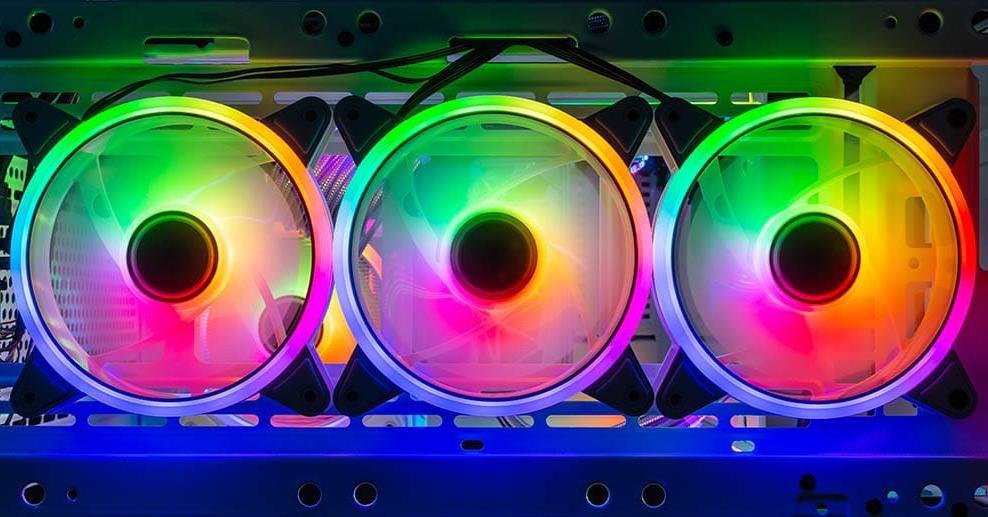Are you curious to know what is ARGB? You have come to the right place as I am going to tell you everything about ARGB in a very simple explanation. Without further discussion let’s begin to know what is ARGB?
In the ever-evolving realm of technology and aesthetics, a captivating innovation has taken center stage: ARGB, or Addressable RGB lighting. From dazzling gaming setups to futuristic architectural designs, ARGB lighting has transformed the way we perceive and interact with illuminated spaces. In this blog post, we’ll embark on an illuminating journey to unravel the mysteries of ARGB, exploring its definition, functionality, applications, and the impact it has on various industries.
What Is ARGB?
Addressable RGB, often abbreviated as ARGB, refers to a lighting technology that enables the independent control of individual LEDs within a lighting system. Unlike conventional RGB lighting, where all LEDs within a system change color simultaneously, ARGB lighting allows for dynamic and intricate patterns of colors, brightness levels, and effects to be applied to each LED separately.
How ARGB Works?
At the heart of ARGB technology lies a microcontroller or integrated circuit, which communicates with each individual LED. This microcontroller stores and processes data related to color and lighting effects, enabling precise control over the illumination of each LED.
Key Components And Features Of ARGB:
- Microcontroller: The brain of the ARGB system, the microcontroller, processes and manages the data for each LED, allowing for independent control.
- LEDs: Addressable RGB lighting systems consist of multiple LEDs, each with its own color capabilities. These LEDs are often arranged in clusters or strips.
- Control Software: To harness the full potential of ARGB lighting, users rely on specialized software. This software offers a user-friendly interface to customize colors, effects, and animations.
- Customization: ARGB lighting systems allow users to create an array of stunning visual effects, from smooth color transitions and gradients to animated patterns that can synchronize with music or system events.
Applications Of ARGB Lighting
- Gaming and PC Builds: ARGB lighting has become a staple in gaming setups, transforming computer cases, keyboards, and peripherals into vibrant works of art. It adds a dynamic visual dimension to the gaming experience, enhancing immersion.
- Interior Design and Architecture: From homes to commercial spaces, ARGB lighting is used to create captivating lighting displays that evoke moods, enhance ambiance, and showcase architectural features.
- Entertainment and Events: ARGB lighting is a popular choice for concerts, stage shows, and events, as it can be synchronized with music and other visual effects to create mesmerizing spectacles.
- Automotive: ARGB lighting is making its mark in the automotive industry, allowing for customizable and eye-catching lighting accents both inside and outside vehicles.
- Consumer Electronics: Products like smartphones, headphones, and speakers are adopting ARGB lighting to enhance aesthetics and user experience.
The Impact Of ARGB Lighting
ARGB lighting represents a fusion of technology and artistry, bridging the gap between functional lighting and creative expression. Its impact spans various industries, offering designers, enthusiasts, and consumers new ways to interact with and appreciate illuminated environments. As ARGB lighting continues to evolve, we can expect to see even more innovative applications and breathtaking visual displays that push the boundaries of what’s possible in the world of lighting design.
Conclusion
Addressable RGB lighting, or ARGB, has emerged as a groundbreaking technology that redefines how we perceive and utilize lighting. Its ability to create intricate patterns, dynamic color displays, and immersive effects has captured the imagination of individuals and industries alike. As ARGB lighting continues to illuminate our surroundings, from gaming setups to architectural marvels, it’s clear that its potential for creative expression and technological innovation knows no bounds.
Everything has its disadvantages on Disadvantagess you will get to know more.
FAQ
What Is Rgb Vs ARGB?
RGB stands for red, green, and blue and ARGB stands for addressable red, green, and blue. RGB produces static illuminated color effects on your PC. ARGB can be programmed to produce dynamic illuminated color effects on your PC. ARGB controls the color settings of individual LEDs.
What Is The ARGB Explained?
What is ARGB? The “A” in ARGB stands for “Addressable”. ARGB allows for individual LED control, so if an LED strip is made up of 50 LEDs, you can have 50 different colours at once. This allows for much greater control of an ARGB strip compared to an RGB strip.
What Is ARGB Led Light?
Addressable RGB (ARGB) lighting is a type of RGB lighting that is more advanced and flexible. It is referred to as “addressable” because each individual LED in an ARGB lighting strip can be controlled and programmed independently.
What Does An ARGB Header Do?
An ARGB header is a 5V 3-pin connection that allows you to control each individual LED on an addressable LED strip or other device. The signal from the motherboard travels through this port and is translated into digital information that controls the different colors and patterns of the LEDs.
I Have Covered All The Following Queries And Topics In The Above Article
What Is ARGB Vs Rgb
What Is The Difference Between Rgb And ARGB
What Is ARGB Fan
What Is ARGB Lighting
What Is ARGB Header
What Is The Difference Between ARGB And Rgb
What Is An ARGB Header
What Is ARGB Color
What Is ARGB?
What Is ARGB Connector
ARGB What Is Alpha
What Is ARGB
What does ARGB stand for?
